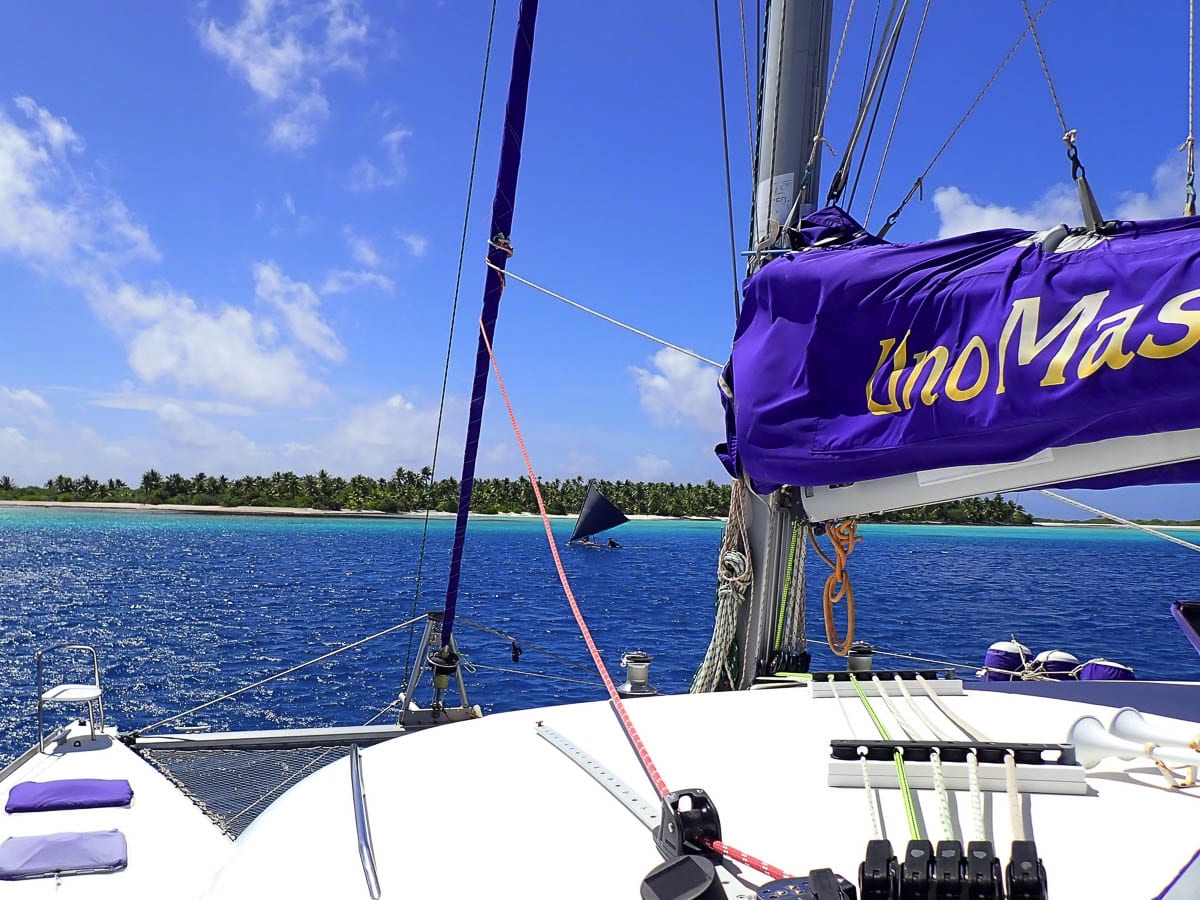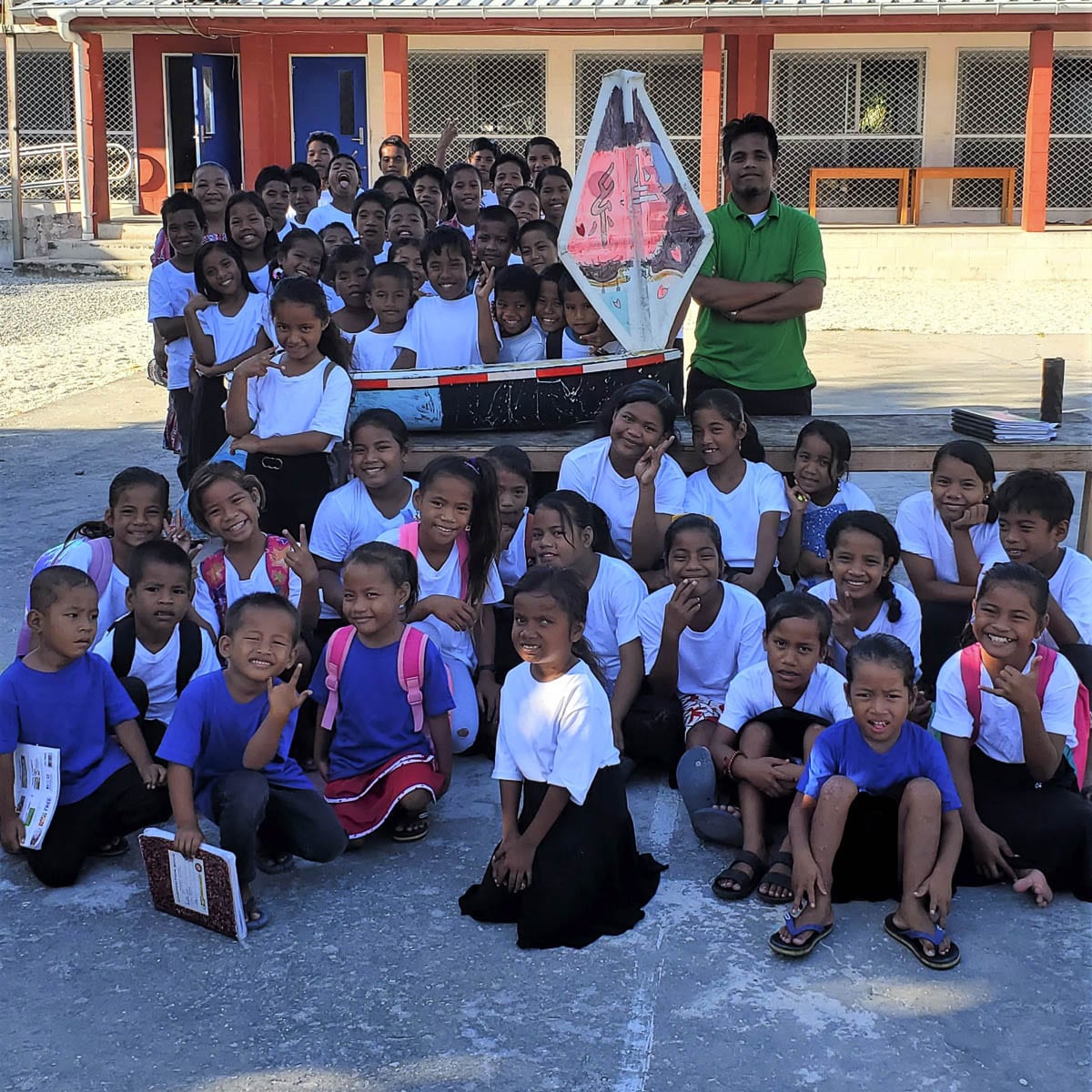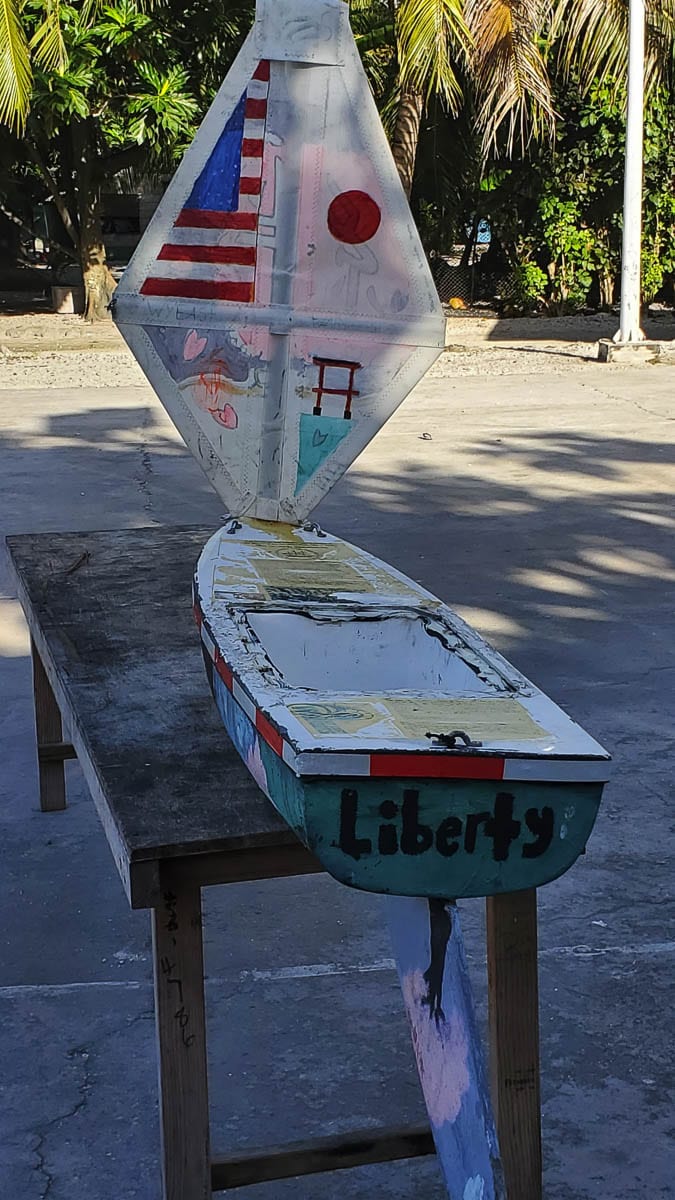Students learn about nautical travel and science as part of the Columbia River Maritime Museum’s Mini Boat Program
VANCOUVER — It’s an adventure complete with build-your-own sea-worthy vessels, ocean launches, connections to other cultures and sometimes, crashes on tropical islands.
The students at Wy’east Middle School have been on the voyage of a lifetime, without ever leaving home. After sailing 4,500 miles in 101 days, their uncrewed mini boat, the S/V Liberty arrived on Nov. 4 at the Ailuk Atoll, in the Marshall Islands, with a population of just 357.

“When you build something in the classroom as a student and even for myself as a teacher or educator, I’m not thinking globally,” said Wy’east science teacher Joe Boken. “So now that we’ve come to a point where the interest and engagement has piqued because there’s this huge event. It’s something that everyone at our school is talking about. I’ve even been able to learn about other students at wyeast and within our school district who are of marshallese descent.”
Boken explained that when he told a student from the Marshall Islands about the boat landing there, they were beyond thrilled. The journey, it seems, is connecting people in spite of students not even being able to be in school right now.
The adventure is part of the Columbia River Maritime Museum’s Mini Boat Program; an exciting hands-on and “brains-on” program that provides a one-of-a-kind educational opportunity that has introduced more than 1,200 students to marine science, international exchange, and all elements of the STEAM fields of science.
Since 2017, a total of 27 mini boats have traveled approximately 75,000 nautical miles (and climbing) and are tracked by GPS daily.
“The Liberty, you know, is our COVID boat and with all the disappointments of 2020, it’s been our shining star. It’s not just for us but for all the people who are following the program,” said Nate Sandel, education director with the Columbia River Maritime Museum. “That boat sailed as if it had, you know, a captain on board. In only one turn did it deviate from like a direct straight shot to the Marshall Islands; 101 days, 4500 nautical miles, that’s just mind blowing.”
Still floating with minimal damage after traversing a reef to reach land, the boat was initially left in place, because islanders were wary of COVID-19 arriving to their tiny atoll. However, upon exploring the vessel further, a note the students had affixed to the boat helped tell the story, and helped locals track the boat back to the students who built it.
Ankit Typhoon, mayor of Ailuk, is now working with the museum and the seventh graders to have the boat repaired and relaunched so it can continue its journey to Japan. Capt. Mark and Angela Stearns of Colorado who are docked with their boat the S/V Uno Mas, have assisted with coordination in the effort.

“They have two landline telephones, and no cell phone service, neither of the two landline telephones work,” Boken said. “They do have a ham radio. So Nate has been spearheading the communication over ham radio, then we’ve had these telephone and email conversations where ultimately Typhoon said ‘Hey, don’t worry about it. I’m going to go out to the island, and I’ll let you guys know.’ We really had no clue, they have no internet, so they can’t send us or email us a picture, there’s no live streaming, there’s just this translated story of, ‘Yes, this thing arrived here.’”
Through the Mini Boat Program, students cooperatively design, build, launch and navigate 5-foot seaworthy boats on a journey across the Pacific to Japan. Sister schools in Japan launch an identical fleet, heading this way.
The S/V Liberty was designed by Wy’east students who took part in the program last school year, designing a boat to launch off the Oregon coast.
Their initial launch resulted in a crash landing this spring – a week before the school moved to remote learning at home. Working safely outside with Boken, the students repaired the boat, then came up with an idea to launch it on the Columbia River, sending it toward Astoria for an ocean re-launch. The trip was captured over three livestream events so Oregon and Washington students who were stuck at home could tune into the journey.
The boat was finally launched on July 25 heading for Japan, when it took a detour, arriving at the tiny Marshall Islands atoll.

This fall, the program has evolved the program with a mini boat “Mobile Makerspace” that visits students outdoors at a safe distance to design, build, paint, and prepare their boats.
This is accompanied with weekly virtual visits by the Museum’s education staff in partnership with classroom teachers. The students have had guest visitors such as a National Weather Service meteorologist to help plan boat navigation, hands-on shark dissections and visits with their sister schools in Japan — all conducted over Zoom.
“We’re navigating the uncharted waters of COVID-19 and finding new ways to share this program with students,” Sandel said in a release. “Even with all the disappointments 2020 has brought, this program has been a shining star for so many.”
Students at Eisenhower Elementary School in Vancouver are also taking part this year. An additional program called the “Mini Boat Explorers” is providing an ongoing weekly program serving underserved students in the North Coast area.
The public is invited to follow along on the adventures via the Miniboat Facebook page. Every exciting moment of the Marshall Islands adventure will be captured as S/V Liberty is prepared to sail again, continuing its journey toward Japan.
For more information about the Mini Boat Program visit www.crmm.org/miniboats. Donations to help the program continue this year during COVID-19 can also be made via the program’s Go Fund Me page.
Information provided by the Columbia River Maritime Museum




